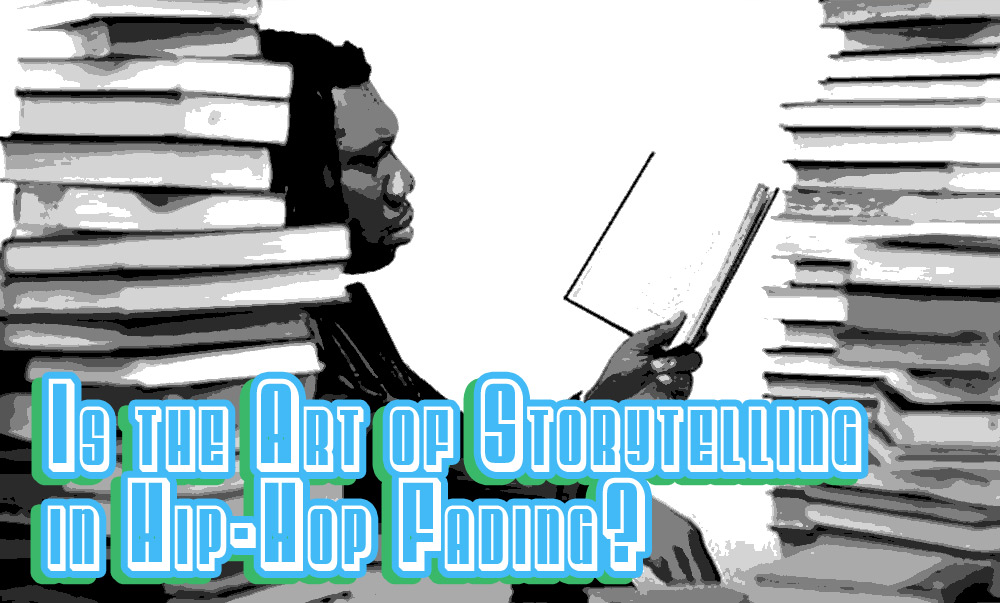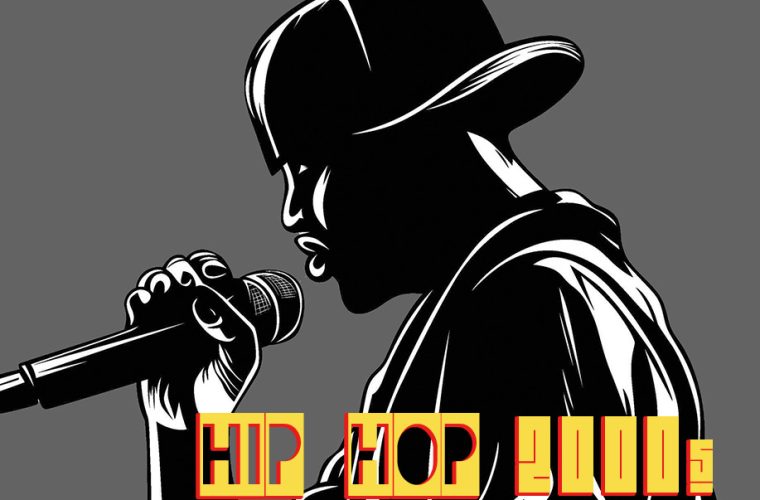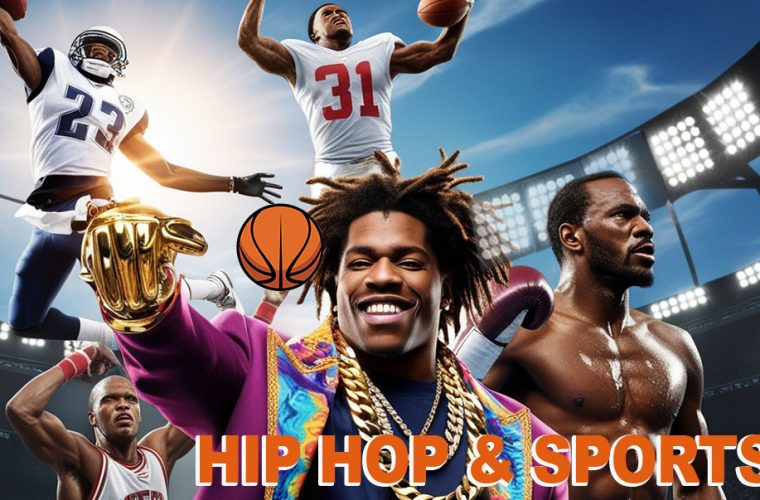
By: Dogli Wilberforce
Rapindustry.com
The evolution of hip-hop has sparked a significant debate: Is the art of storytelling in hip-hop fading? As we reflect on the genre’s rich history, it’s essential to consider whether modern hip-hop has strayed from the profound storytelling tradition established by legends like KRS-One, Nas, Tupac, and Slick Rick, opting instead for catchy hooks and beats that dominate today’s charts. This question has been raised not just by older fans of the genre but by many who see storytelling as one of hip-hop’s core strengths, providing not only entertainment but also social commentary and insight into the realities of marginalized communities.
But is storytelling truly fading, or is it merely evolving? This article aims to explore both sides of the argument, analyze the cultural and commercial factors at play, and assess the state of storytelling in today’s hip-hop landscape.
The Legacy of Storytelling in Hip-Hop
Historically, hip-hop has been a powerful medium for storytelling. Artists like Nas, Tupac Shakur, Slick Rick, and Biggie Smalls crafted narratives that resonated deeply with listeners, often reflecting the struggles and triumphs of their communities. Nas’s Illmatic is a quintessential example, weaving intricate tales of life in New York City with poetic lyricism. In tracks like “The World Is Yours” and “N.Y. State of Mind,” Nas transported listeners into the gritty realities of his environment, giving voice to the streets and the experiences of those who lived there.
Similarly, Tupac’s songs often served as poignant commentaries on social issues, personal experiences, and the complexities of life in marginalized communities. Tracks like “Brenda’s Got a Baby” and “Dear Mama” remain classics not just for their production but for the emotional depth and narrative arc embedded in the lyrics. These songs told powerful stories about poverty, motherhood, systemic inequality, and survival, offering windows into lived experiences that were often overlooked by mainstream media.
Artists like Tupac and Nas utilized their platforms not just to entertain but to educate and provoke thought. They gave voice to the voiceless and documented the realities of urban life, drawing from their personal experiences while connecting them to broader social and political themes. Their storytelling provided a form of activism, allowing hip-hop to serve as a mirror for the communities it emerged from.
The storytelling tradition in hip-hop can even be traced back to the role of the Griot, a West African storyteller who preserved the oral histories of their people. Much like the Griots of old, rappers have taken on the mantle of chroniclers, documenting their lives and those around them through their lyrics. This connection to cultural roots is vital; it reminds us that hip-hop is not merely a genre but a living narrative that reflects societal realities.
The Shift Towards Catchy Hooks and Commercial Appeal
In recent years, however, there has been a noticeable shift in hip-hop. The rise of mumble rap, trap, and an emphasis on catchy hooks have led some to argue that storytelling has taken a backseat. Tracks that prioritize infectious beats and repetitive choruses often overshadow those with deep narratives. Songs like “Gucci Gang” by Lil Pump or “Rockstar” by Post Malone are prime examples of a commercialized sound that relies heavily on production, style, and catchy one-liners rather than meaningful stories.
This trend raises questions about the genre’s future: Are we losing the profound storytelling that once defined hip-hop? Critics argue that the shift towards hook-heavy songs dilutes the essence of the genre. While catchy hooks can enhance a song’s commercial appeal, they often lack the depth and emotional resonance found in traditional storytelling. The focus on production over narrative can lead to a homogenization of sound, where many tracks blend into one another without leaving a lasting impact.
This change can be attributed in part to the commercial pressures of the music industry. In today’s streaming era, where success is often measured by playlist placements, viral moments on TikTok, and sheer number of plays, catchy, easily digestible songs tend to dominate. The result is a new class of rappers who prioritize crafting hits over delivering messages or telling stories. The industry’s desire for content that can quickly gain traction on social media platforms has further encouraged this approach, pushing some artists to favor mass appeal over substance.
Modern Storytellers: A Glimmer of Hope
Despite these concerns, it’s crucial to recognize that storytelling is not absent from modern hip-hop. Artists like Kendrick Lamar, J. Cole, and even non-mainstream rappers like Rapsody continue to push boundaries with their narrative-driven lyrics. Kendrick’s albums, such as good kid, m.A.A.d city and To Pimp a Butterfly, are masterclasses in storytelling, exploring themes of identity, race, personal struggle, and societal pressures through cohesive narratives. In good kid, m.A.A.d city, for example, Kendrick takes listeners on a cinematic journey through his youth in Compton, navigating the pitfalls of gang culture and poverty while struggling to find his own path.
J. Cole’s introspective tracks often delve into personal experiences, societal issues, and the human condition. His album 2014 Forest Hills Drive is a personal narrative reflecting on his rise to fame and the societal pressures that come with it. Songs like “Love Yourz” and “No Role Modelz” offer thoughtful reflections on materialism, self-worth, and the role models young people choose to look up to.
Moreover, contemporary artists are experimenting with new forms of narrative expression. The blending of genres and incorporation of diverse influences can lead to innovative storytelling methods that resonate with younger audiences. Rappers like Vince Staples and Dave East tell stories that speak to a new generation, using fresh perspectives and contemporary soundscapes.
While some argue that this evolution marks a departure from hip-hop’s roots, others see it as an expansion of what storytelling in hip-hop can be. Rather than the linear narratives of the past, many modern rappers use a more abstract or fragmented approach to convey their messages. This evolution does not necessarily mean the death of storytelling; rather, it reflects an adaptation to changing musical landscapes.
Can Storytelling and Commercial Success Coexist?
The question remains: Can hip-hop maintain its storytelling roots while adapting to a commercialized, digital world? Some artists have managed to strike a balance between commercial appeal and narrative depth. Drake, for example, mixes catchy hooks with introspective storytelling in tracks like “Marvins Room” or “The Ride.” Even within trap music, artists like Future have woven elements of storytelling into their music, sharing personal stories of addiction, pain, and success amidst the backdrop of heavy production.
For hip-hop to thrive, it must find a way to blend its commercial success with its artistic integrity. This is not an impossible task, as history has shown us time and again that artists can achieve mainstream appeal while maintaining lyrical depth. However, it requires a willingness to innovate and a commitment to preserving the genre’s storytelling traditions.
Conclusion: A Call for Balance
In conclusion, while there is evidence suggesting that modern hip-hop may be moving away from its deep storytelling roots in favor of catchy hooks and beats, it is essential to acknowledge the ongoing contributions of artists who continue to prioritize narrative depth. The genre must strike a balance between commercial appeal and artistic integrity. As listeners, we should advocate for music that tells stories—stories that reflect our shared humanity and connect us across different backgrounds.
The art of storytelling in hip-hop may be evolving, but it is far from fading. It remains a vital thread in the fabric of music history—one that continues to weave new narratives while honoring its rich legacy. As the genre continues to grow, so too will the stories it tells, adapting to the world around it while staying true to its roots.



